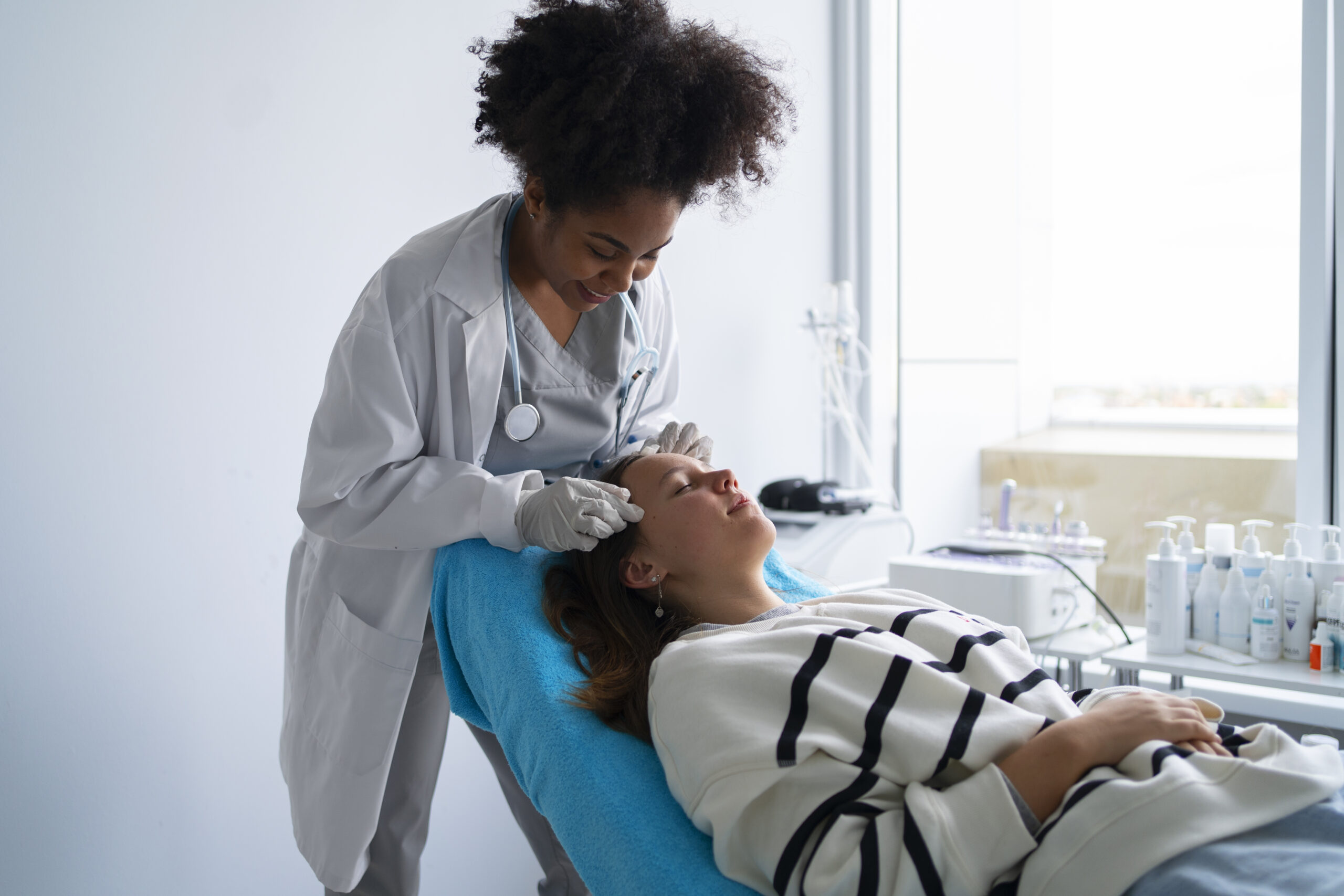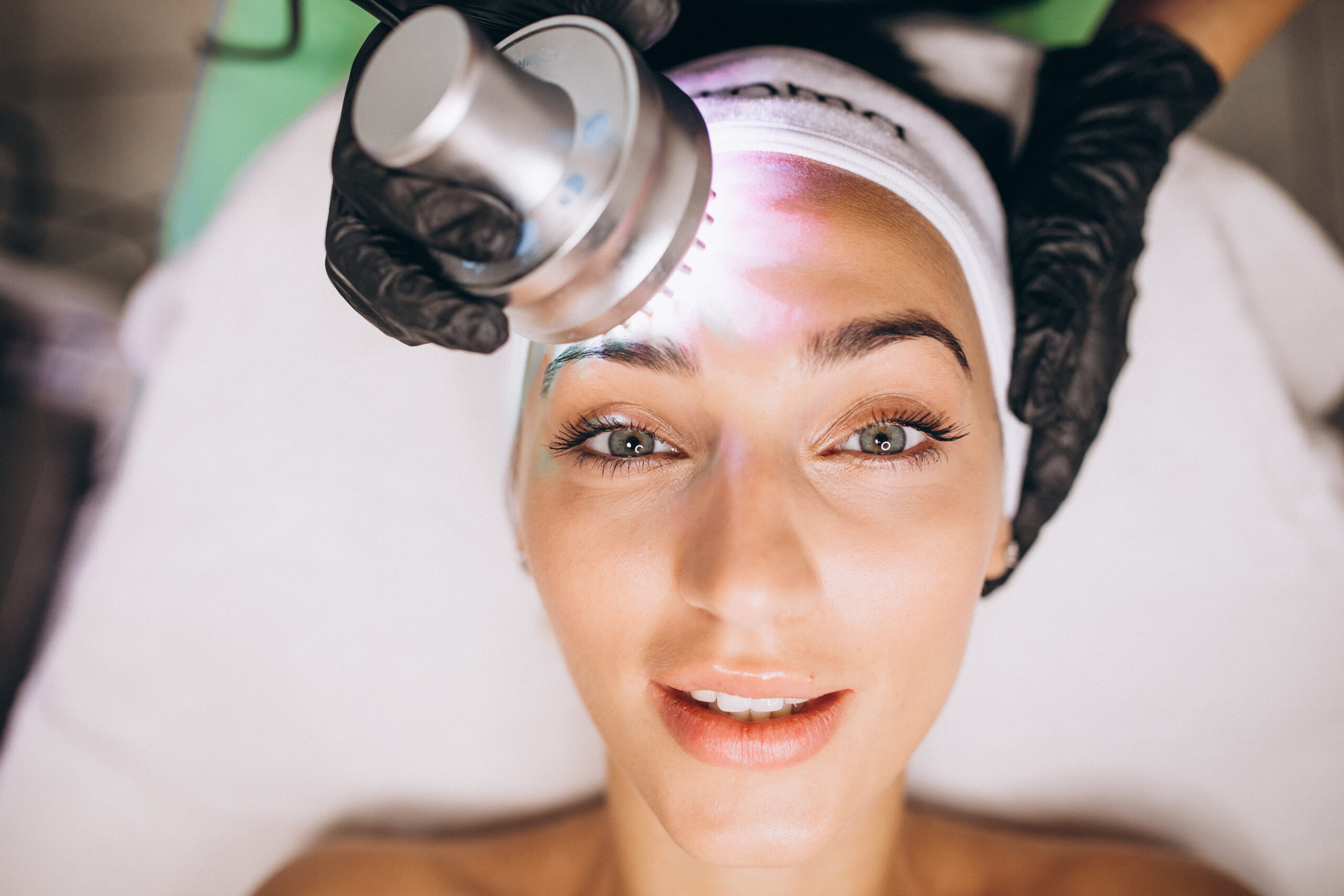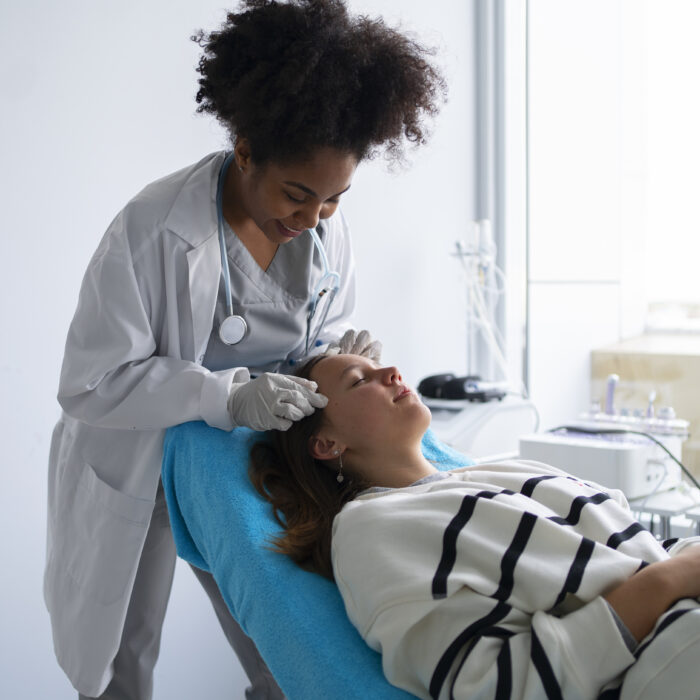
No one ever expects to deal with lice. Whether from a child’s school outbreak or a rare adult case, discovering lice can be stressful, especially if you’ve invested time and money into your hair color. The immediate concern for many is simple: will lice treatment ruin my hair color?
Treazure Studios recognizes the value of beautiful, properly colored hair. Whether you’re doing a strong balayage or a modest root touch-up, protecting your color is essential. However, when lice enter the scene, many people wonder if treatment products will destroy all of the salon magic. Let’s look at the truth about lice treatments, how they interact with colored hair, and what you can do to safeguard your appearance.
What Exactly Is Lice Treatment?
Lice treatment refers to the application of medicated products designed to eliminate head lice and their eggs. These treatments typically come in shampoos, creams, or sprays and are readily available over-the-counter or by prescription. Most contain active ingredients like permethrin, pyrethrin, or dimethicone, all formulated to kill lice on contact.
Because lice treatment products are often medicated and meant to sit on the scalp for a specified period, many people are understandably cautious about how they might affect chemically treated hair. Hair that’s been colored, bleached, or highlighted tends to be more porous and sensitive to additional chemical exposure, making this concern more valid.
How Lice Treatment Affects Hair Structure
While lice treatment products are not specifically designed to alter hair color, they can influence how your hair looks and feels, especially if you’ve recently colored it. The key issue lies in the condition of color-treated hair. Chemically colored hair has an altered structure, its cuticle layer is more open, allowing dye to penetrate but also making it more vulnerable to drying agents or pH imbalances.
When lice treatment products are applied to this already-compromised surface, they may exacerbate dryness, leading to dullness, rough texture, and sometimes a faded appearance. While the active ingredients don’t typically “strip” color the way bleach or strong sulfates might, they can subtly change how your hair reflects light or how long your tone holds.
Can Lice Treatment Strip Hair Color?
The short answer? Not usually but it depends on a few factors. Most modern lice treatment products are formulated to be gentle on hair, especially those that avoid harsh alcohols or ammonia-based compounds. However, certain ingredients and usage patterns can accelerate color fading. For instance, pyrethrin-based treatments often contain added surfactants or emulsifiers, which can act similarly to clarifying shampoos. If your hair was just colored days before, these formulas may lift some of the fresh pigment from the outer cuticle layer. Dimethicone-based products, on the other hand, tend to coat the hair rather than strip it, which could make color appear temporarily dulled but not necessarily removed.
Ultimately, the effect of lice treatment on hair color depends on the timing, hair type, and coloring applied. Darker, richer shades may alter less noticeably, whereas lighter, pastel, or red tones, which fade faster, may suffer a minor shift in vibrancy.
Timing Matters: Hair Color and Lice Treatment
One of the most important factors in determining whether lice treatment will affect your hair color is how recently you dyed your hair. If you’ve colored your hair within the past 48 to 72 hours, it’s more susceptible to disruption. This is because color molecules are still settling into the hair shaft and may not have fully stabilized.
Applying lice treatment during this window may cause partial fading or uneven tones. Conversely, if your hair color is several weeks old, it’s more likely to withstand the treatment with minimal to no visible impact. However, if you plan to recolor your hair after treating lice, wait at least 7–10 days to allow your scalp and strands to recover from any potential dryness or irritation caused by the treatment.
Ingredients to Watch Out For
When evaluating how lice treatment might interact with your colored hair, it helps to look closely at the ingredient list. Products containing alcohol-based solvents, strong detergents, or high pH agents are more likely to disturb the balance of color-treated strands. Repeated applications especially if instructions are not followed carefully can also intensify damage.
Alternatively, treatments that rely on mineral oils or silicone derivatives, like dimethicone, may offer a gentler approach. These formulas work by physically smothering lice rather than chemically disrupting them, which can be a safer option for preserving your hair’s tone and texture.
Salon-Level Hair vs. At-Home Care
There’s a noticeable difference between hair that’s been professionally colored and hair that’s been treated at home. At Treazure Studios, our salon formulas are high-quality and sealed with precision to ensure longevity and shine. However, even professionally treated hair can suffer when exposed to harsh chemicals, which is why knowing the safest path forward is crucial when facing lice treatment.
If you’re concerned about how a specific lice product might affect your color, consulting your stylist before beginning treatment can help. They may recommend protective steps or aftercare strategies to preserve your color while addressing the lice issue.
How to Minimize Color Fading During Lice Treatment
If you find yourself needing lice treatment shortly after a color session, don’t panic. There are a few ways to reduce the risk of color fading:
- Use the mildest treatment option available, ideally one without alcohol or harsh cleansers.
- Avoid washing your hair multiple times during the treatment process.
- Follow treatment with a deep-conditioning mask or color-safe leave-in product to restore moisture and seal the cuticle.
- Postpone recoloring or bleaching until your hair has fully recovered and your scalp is calm.
Restoring hydration and pH balance to the scalp and strands is key. If the treatment causes any visible dullness, a gloss or toner applied professionally can help restore vibrancy without over-processing.
What If My Color Is Already Affected?
In cases where lice treatment has slightly altered your hair color—whether it’s a loss of vibrancy or unexpected tonality—there are solutions. Depending on the extent of the shift, your stylist might suggest a color-refreshing gloss, a toner to rebalance hues, or a semi-permanent dye to revive faded pigment without additional stress on your hair.
In more noticeable cases, a full color correction may be required, especially if uneven fading or discoloration has occurred. Fortunately, Treazure Studios specializes in personalized color services, so you can feel confident knowing your hair will return to its best, healthiest form—no matter the setback.
Prevention and Long-Term Care
Once you’ve dealt with lice, preventing a recurrence is critical—not only for peace of mind, but also to avoid subjecting your hair to another round of treatment. Clean the sheets, disinfect brushes and combs, and avoid sharing personal belongings. Additionally, continue to maintain your hair with color-safe products to ensure it remains vibrant and healthy. If you color your hair frequently and want to be proactive, ask your stylist about a program designed to maintain color integrity in all conditions, including unexpected ones like lice treatment.
Lice treatment doesn’t have to mean the end of your beautiful hair color. While it’s true that some formulas can cause mild fading especially when used soon after a fresh color job. Most treatments, when used correctly, will not ruin your results. The key is to choose your product wisely, follow directions carefully, and prioritize aftercare.
At Treazure Studios, we believe in empowering our clients with knowledge—not just about beauty, but about protecting the investments they make in their self-care. Whether you’re refreshing your look or facing a hair challenge like lice, we’re here to support you with expert advice and professional solutions tailored to your needs.
So if you’re navigating lice treatment and wondering about your color—take a deep breath. With the right steps, your hair can stay healthy, radiant, and vibrant, just as you intended.













